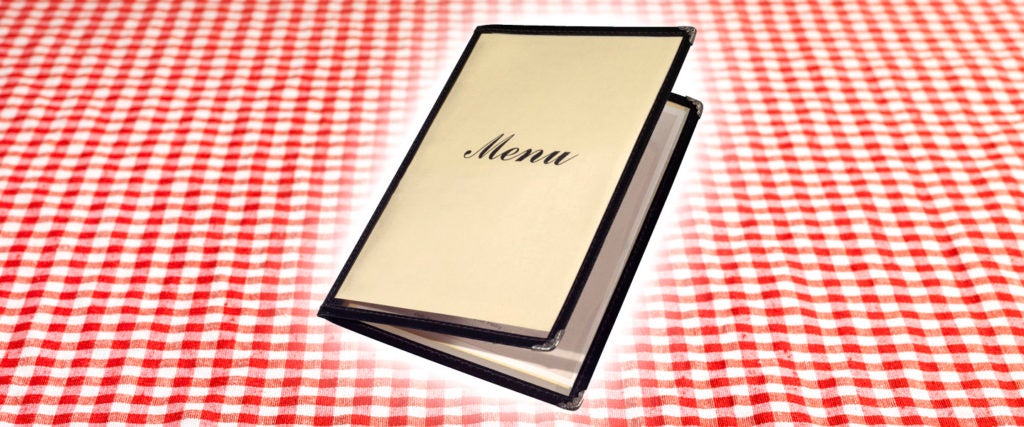Upon sitting down at a restaurant recently, I begrudgingly opened up my iPhone camera to scan the QR code for the menu. But before being allowed to look at what consumables I’d be spending my money on, I had to look at a fucking ad. “This ad helps keep this menu platform free,” was what the pop-up on my phone told me.
Like most people who’ve had to use QR menus lately, I was pissed. It doesn’t matter to me that an online menu platform is free — I didn’t ask for it in the first place. I don’t want to navigate some clunky digital drop-down menu. I don’t want to scroll and zoom in and squint at the tiny letters. I don’t want to be on my phone, period. I want my goddamn paper menu back. Now.
Look, I understand that restaurant profit margins are small, especially right now. QR code menus save a few bucks on the cost of printing new paper menus, especially if menus are updated frequently. But perhaps more insidiously, QR menu platforms that allow for ordering online also cut down on the costs of labor. As tech expert Kurt Knutsson told FOX Business, QR codes can reduce labor costs by 30 to 50 percent — something that I’m sure is “good” for business owners, but clearly bad for the workers who actually keep the restaurant running. And by making workers do less work, customers might feel less inclined to tip the already-underpaid employees working in the QR codes’ midst.
None of that is good. And besides, if I wanted to order from an app, I’d be at home ordering takeout, not sitting at a restaurant. Thanks to COVID, I’ve been on my phone for a year-and-a-half straight. I am dying for more experiences that don’t incorporate my devices, and restaurants are one of the few places I feel socially obligated to put them away. I want to see another person, ask the waiter questions, hear staff opinions and then leave a big fat tip.
But there’s a deeper reason to dislike QR menus, beyond romanticism for dining experiences of the past. “People don’t understand that when you use a QR code, it inserts the entire apparatus of online tracking between you and your meal,” Jay Stanley, a senior policy analyst at the American Civil Liberties Union, told The New York Times in July. “Suddenly your offline activity of sitting down for a meal has become part of the online advertising empire.”
Basically, QR codes have made going out to eat part of the techno-authoritarian nightmare. I’m sure my iPhone was already contributing to this anyway — it probably knows when I’m at a restaurant; it might store my credit card data to know what I’ve spent — but I still don’t need to welcome a new form of tracking with open arms.
QR codes were indeed a useful contribution during the early days of the pandemic when hygiene theater was paramount. Considering there was a time when we were disinfecting our mail before we brought it into our homes, it’s fair that people would be wary of reusable menus once they finally ventured out. But this still represents a fundamental misunderstanding of how COVID is transmitted, which is not through germs on surfaces. And as for the general yuckiness of germs that can be shared through surfaces, needing to touch our phones (which are absolutely filthy) before dining defeats anything we might gain from not touching a paper menu.
I’m not arguing we take away QR codes entirely. Plenty of people prefer them, especially people with social anxiety (and I can imagine they’re also particularly useful for people with disabilities, some who may appreciate a wider variety of tools to communicate). There are plenty of situations where their expediency is more practical, too, like in quick-service, fast-casual spots where your main priority is just getting something to eat.
But at restaurants where there’s some semblance of a dining experience, please, please, please offer me a physical menu at the host stand. I just want the option of saying no to having another tech company tracking my information and increasing my screen time further. I’ll risk whatever germs might be on that menu, and I promise I’ll compensate for my annoying-ness accordingly.

